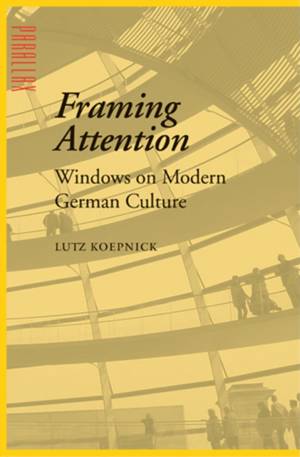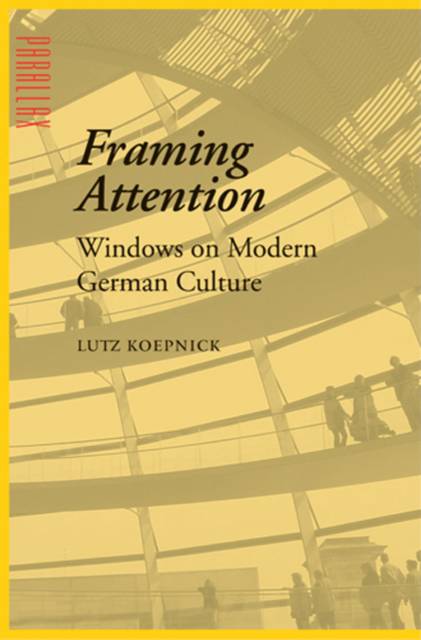
- Retrait gratuit dans votre magasin Club
- 7.000.000 titres dans notre catalogue
- Payer en toute sécurité
- Toujours un magasin près de chez vous
- Retrait gratuit dans votre magasin Club
- 7.000.000 titres dans notre catalogue
- Payer en toute sécurité
- Toujours un magasin près de chez vous
Description
In Framing Attention, Lutz Koepnick explores different concepts of the window--in both a literal and a figurative sense--as manifested in various visual forms in German culture from the nineteenth century to the present. He offers a new interpretation of how evolving ways of seeing have characterized and defined modernity.
Koepnick examines the role and representation of window frames in modern German culture--in painting, photography, architecture, and literature, on the stage and in public transportation systems, on the film screen and on television. He presents such frames as interfaces that negotiate competing visions of past and present, body and community, attentiveness and distraction. From Adolph Menzel's window paintings of the 1840s to Nam June Paik's experiments with television screens, from Richard Wagner's retooling of the proscenium stage to Adolf Hitler's use of a window as a means of political self-promotion, Framing Attention offers a theoretically incisive understanding of how windows shape and reframe the way we see the world around us and our place within it.
Errata: Chapter 2, "Richard Wagner and the Framing of Modern Empathy"
Credit for two translations and for a seminal discussion of empathy theory was inadvertently omitted by the author. The reader should have been directed to two essays by Juliet Koss: "Bauhaus Theater of Human Dolls," The Art Bulletin 85, no. 4 (December 2003): 724-45 and "On the Limits of Empathy," The Art Bulletin 88, no. 1 (March 2006): 139-57.
Spécifications
Parties prenantes
- Auteur(s) :
- Editeur:
Contenu
- Nombre de pages :
- 312
- Langue:
- Anglais
- Collection :
Caractéristiques
- EAN:
- 9780801884894
- Date de parution :
- 01-01-07
- Format:
- Livre relié
- Format numérique:
- Genaaid
- Dimensions :
- 161 mm x 235 mm
- Poids :
- 444 g







